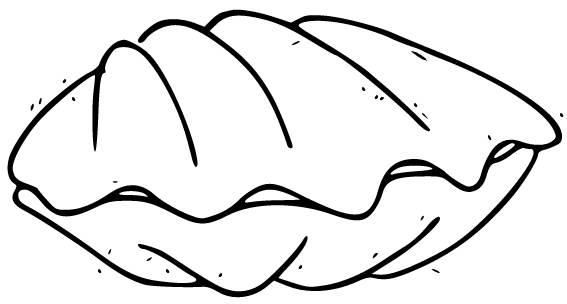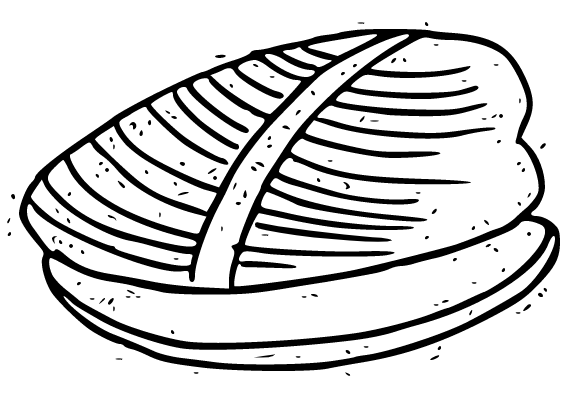-

-
The Discerning Mollusk's Guide to Arts & Ideas
-


Resurrection of Wild Flowers
Mohammed Khaïr-Eddine, translated by Jake Syersak
OOMPH! Press, December 2022
was first introduced to Mohammed Khaïr-Eddine after picking up a book called First Breaths, which was translated by Jake Syersak and published by OOMPH! Press in 2019. The very first poem in that collection is “Horoscope” and it was one of those rare, beautiful moments that ‘true readers’ experience when they find a piece of writing that is extraordinary. Filled with intense and dizzying language, it instantly placed Khaïr-Eddine into that empyrean echelon of artists for me. That was it, a handful of stanzas and I was in love. So, needless to say, I was very excited to see another translation come out from both Syersak and OOMPH! at the end of 2022. It did not disappoint.
Death, braying at me in every direction . . .
. . . bathing in the purest, most furious lucidity of it all.
If all art veers towards death or sex, this work aligns squarely on the death side. Resurrection of Wild Flowers, like First Breaths, explores the different types of violence, human or natural, immediate or remote, infinitesimal or infinite, that lead us to our final place/space/moment. And, in this work, Khaïr-Eddine is angry. He is angry at the violence but, moreso, he is angry with the complacency of most people to this violence. Repeatedly, readers will find reference to some evil and immediately at its heels will be reference to “you who laugh not, and who weep not, and who do not retaliate”. In “Job”, he laments the “ambient misery” that the crowd endures while “[t]hey try their best to forget everything.” Of these people, he says:
A packet of blue gelatin, their brains; nothing more. Their heart, just a pump to irrigate a walking corpse.
As with the biblical Job, the ultimate lesson is that we must “[n]ever forget that Being is Bitterness!”
Khaïr-Eddine uses certain symbols repeatedly, often in conjunction with another symbol: milk against mud, blood against sea, salt, sun, the city, flesh and its corpse, and quasars against or somehow among the trilobites. The metonymic “city” represents larger modern human endeavors and this work is littered with “moment[s] the city obstructs the sky with the intestines / and vomit of hanged children”. Innocent blood and mother’s milk marinate together in a society where violence has become completely innocuous. Fear is a product of anger, just like violence. This collection contains equal parts rage and trepidation. The poem “Circle” opens with “Here the fearful / wheel of the unknown / dawn twists its way around my neck”. Fear of what a new day might bring is literally choking him. Then:
The terrors pitch and keel their way through my eyes, my hair,
from whence you return, unraveling yourself,
which in turn finds me unraveling, in my great migration,
over a claviature of stars, unconsciously.
The cyclical nature of life and of its violence permeates this work. Repetition is a theme carried throughout, hand in hand with cruelty and death. The eponymous “Resurrection of Wildflowers” pleads:
Have you witnessed the fervor of the sky breaking?
. . .
Deliver my body from this body!,
deliver me
from memory!
This poem, like others, explores how blood is life’s vessel and, because of this fact, it is also the conduit of both violence and memory, two incompatible elements. While he critiques those who look away from social problems, he also acknowledges how memories of what is seen will continue to haunt the viewer.
The complexity of witnessing, of engaging in critique of the world around you, is furthered by moments of happiness. The reaction to violence, the fear and the anger, is quizzically joined by a lot of laughter. Is it laughing in spite of dread or is it evidence of a mental break? In “Celebration”, he clarifies:
Termite mounds, potholes, sewers, marshes,
sodoms, children
orphaned to the streets: dance,
dance in darkness!
To Khaïr-Eddine, it was important to not turn away but to live in critique of this violence. Since life includes joy, you laugh and you dance, even if you have to dance with feet covered in blood. The worst offense would be to completely ignore the horrors of the world and to go on “without noticing that human misery . . . is occurring around them wherever they go.”
It’s important to note that I know very little of Morocco’s history and French colonization. I am able to understand some references, like in “Reagan-Pistoleros”, where Khaïr-Eddine paints President Reagan as a wicked old man playing cowboy and using what was traditionally known as ‘the Orient’ to play out a real-life Western. But largely, I rely on what Khaïr-Eddine conveys, such as:
And all of us, together, crossing streams of hatred,
as Africa curls her eyelashes,
queuing assassins . . .
And, another time:
The whole earth quakes, splits open,
the whole country exhales
its cruel omen.
Based on my limited understanding, I know that I know so little of what this man’s experience must have been like. Despite my ignorance, I am able to connect to the idea of a larger corruption and greed. In “In the Country of Multifaces”, he writes about the Multifaces who control the country:
The Multifaces are thieves and misanthropes, but there is no honor to be found in their brand of misanthropy; it merely secretes the misfortune of others. It derives its essence from it, feeds on and looks after it, gives itself over to the worst sorts of delinquency, which it tries its best to repress, to bury in its rank-and-file, its formless, vagrant flesh.
Like philosophers and critics throughout time, we understand that those in power take advantage of the majority. They are able to perpetuate their power through violence embedded in our social constraints, embodied by the ‘rank-and-file’ who both benefit and are exploited by this relationship.
While Khaïr-Eddine admits that “there is little gentleness to be found in this stone-strewn oblivion” and “little, very little water,” we are made to see the spilt blood as sustenance in this environment. This collection is a call for revolution as much as a call for connection to others who ‘see’ the world around them. He seeks to unite the like-minded so that they are “roused and ready to take it all back, like a dog its ball!”
The role of the translator in the success of the translation cannot be overstated. This seems so completely trite and obvious to say, but translators are often overlooked. Their creative and intellectual labor is perceived as mechanical in the collective imagination, if considered at all. What I loved about this book is that it has the original text on the opposing page of its translation, so the reader is able to read the translation and look back at the original to compare. I have a basic understanding of French and it was readily apparent how masterful Syersak’s artistry is.
For example, we see Syersak’s translation in “From Casablanca to Bogota”:
Wandering, disparate, wandering out beneath the silent
hand-me-downs dyed in sunlight;
The original reads:
Ils errant, dissemblables, ils errent
sous des haillons
silencieux que le soleil colore ;
To me and my introductory French, if I were to only read the original, I would understand it as:
They wander, dissimilar, they wander in rags
silent colored by the sun;
The subtle differences reflect the artistry of Syersak as translator. The choice between a hand-me-down versus a rag is one that implies a replicated history rather than a previous life. This so expertly mirrors this message sustained throughout this collection. In the “Multifaces” piece, we see those in control “playing [the violence] off as their history” but then in the next breath stating “I have no father, no mother, I am autonomous; two monkey copulated in a tree; and there you have it, here I am.” So, they are at once asserting that they are creating a new era while at the same time embedding debased social mores and norms into their history. The reality is a new time but with the same issues, a replicated history. It is not something whose former glory has been worn down, like a rag. The circle, this violence is perpetuated by those ‘in charge’.
This is a beautiful collection that will readjust how you understand poetry and broaden your scope of understanding this world (and universe). Particular gems in this collection include: “A Love Letter to the Angels Who Aren’t Listening”; “Desert”; “Circle”; “Celebration”; “A Time Unlike Any Other”; “Redbreast”; “Song of the Symbolic”; “Psalm 2005 (The Tomb of Alioune Diop)”; “Resurrection of Wildflowers”; “In the Country of Multifaces”; “Fibula”; “Scorpion”; “Job”; “Essaouira”; and, “Requiem”. There is so much to explore in these pages but the real treasure is Khaïr-Eddine’s sensually macabre and uniquely individual phrasing in every poem: like “the splendorous / wound of furious dawns” or “whose soils seethe the sensation of a sting.” This artist aligns the infinitesimal and the infinite in such dizzying succession with incredibly beautiful and innovative prose. Khaïr-Eddine’s talent, in Syersak’s skilled hands, is something more than expert, because it is wholly original and it rages, against power, against the dying of the light. The Resurrection of the Wild Flowers is a call to action: he wants to bring you into the fight, he wants to realign the universe and kill old regimes, because “[a]t the moment everything dies, everything becomes powerful once again.”

Jesi Bender is an artist from Upstate New York. She helms KERNPUNKT Press, a home for experimental writing. She is the author of KINDERKRANKENHAUS (Sagging Meniscus 2021) and The Book of the Last Word (Whiskey Tit 2019). Her shorter writing has appeared in The Rumpus, Split Lip, Adroit Journal, and others. www.jesibender.com